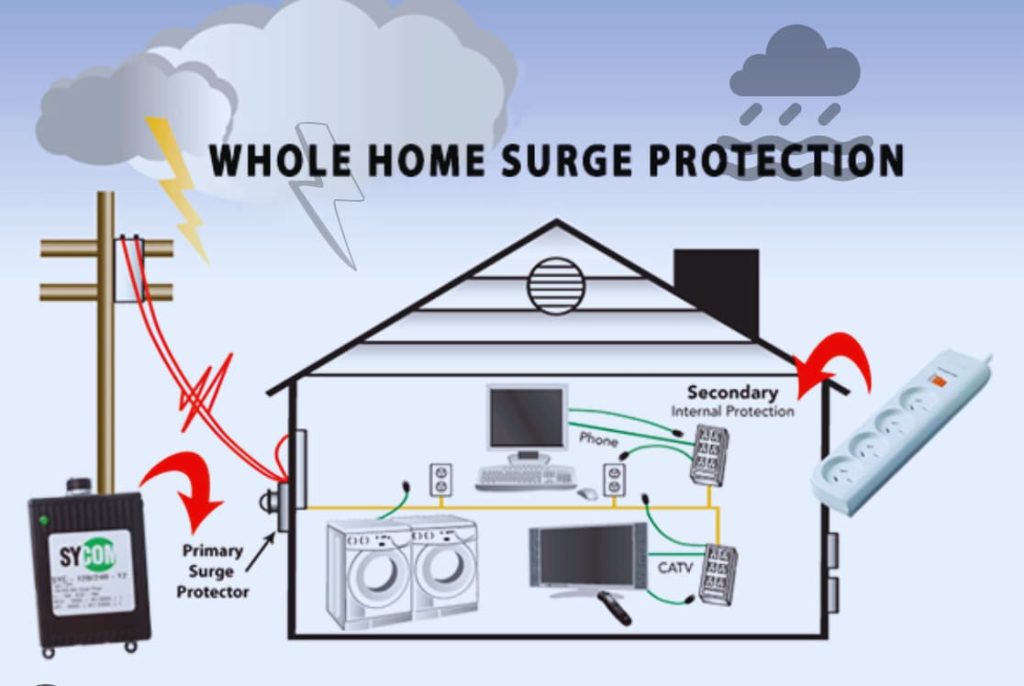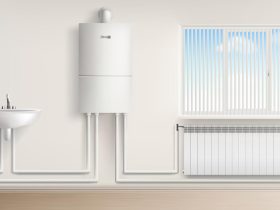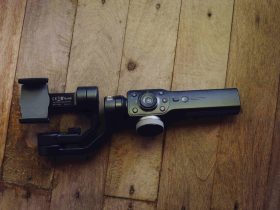Understanding the Importance of Whole House Surge Protector Installation
Power surges are unpredictable and can wreak havoc on your home’s electrical system. To safeguard your valuable electronics and appliances, considering a whole house surge protector is a wise move.
What is a Whole House Surge Protector Installation?

A whole house surge protector is designed to shield your home from sudden voltage spikes. Unlike power strips that protect individual devices, a whole house surge protector acts at the electrical panel level, diverting excess voltage away from your appliances.
The Risks of Electrical Surges
Electrical surges are more common than you might think. They can result from lightning strikes, power grid fluctuations, or even high-powered electrical devices’ cycling on and off. If left unchecked, these surges can damage sensitive electronics, leaving you with costly repairs or replacements.
Benefits of Whole House Surge Protection Installation
Investing in a whole house surge protector comes with a range of benefits. It provides comprehensive protection for all connected devices and extends the lifespan of your electronics and reduces the risk of fire hazards associated with electrical malfunctions.
Choosing the Right Whole House Surge Protector Installation
When choosing a whole house surge protector, there are crucial factors to consider to ensure optimal protection for your home.
Types of Whole House Surge Protectors Installation
Various types of surge protectors are available, each with unique features. Type 1 protectors are designed for the main electrical panel, while Type 2 protectors are installed at subpanels or dedicated appliances. Understanding your home’s needs will guide you in selecting the appropriate type.
Considerations for Selecting the Best Surge Protector
Consider clamping voltage, response time, and joule rating when choosing a surge protector. These specifications determine how effectively the device can handle and suppress voltage spikes. Opting for a surge protector with a lower clamping voltage and higher joule rating ensures better protection.
Installation Process Demystified
Installing a whole house surge protector may seem daunting, but it’s a manageable task with the right knowledge. However, weighing the pros and cons of DIY installation against seeking professional help is essential.
DIY vs. Professional Installation
Pros and Cons of DIY Installation
DIY installation may appeal to those with electrical knowledge. It can be a cost-effective option, but it comes with risks. Incorrect installation might lead to a false sense of security or damage to the surge protector and connected devices.
Advantages of Professional Installation
Professional installation guarantees proper placement and connection of the surge protector. Electricians have the expertise to assess your home’s electrical system and determine the most effective installation points. This ensures optimal protection for your entire home.
Cost Comparison: DIY vs. Professional
While DIY installation may save money initially, the potential risks and long-term consequences might outweigh the benefits. Professional installation ensures peace of mind and maximizes the effectiveness of the surge protector.
Signs Your Home Needs Surge Protection
Understanding the signs that your home requires surge protection is crucial in preventing potential damages.
Common Signs of Electrical Surges
Flickering lights, frequent appliance burnouts, and unexplained electronic malfunctions are common indicators of electrical surges. Paying attention to these signs allows for early detection and intervention.
Potential Damages Caused by Surges
Electrical surges can damage your electronics and your home’s wiring and appliances. You can mitigate the risks and protect your investments by installing a whole house surge protector installation.
Importance of Early Detection
Early detection of surge-related issues allows for timely action. Installing a surge protector before damages occur is a proactive step toward maintaining a safe and functional home environment.
Maintaining and Testing Your Surge Protector
Ensuring the longevity and effectiveness of your surge protector requires regular maintenance and testing.
Routine Maintenance Tips
Keep the surge protector clean and free from dust or debris. Regularly inspect the device for any signs of wear or damage. Addressing issues promptly ensures continuous protection.
Periodic Testing Procedures
Testing the surge protector periodically is essential. Follow the manufacturer’s guidelines for testing frequency and procedures. This ensures that the device is ready to respond to any potential surges.
Ensuring Longevity and Effectiveness
A well-maintained surge protector can last for many years. By adhering to routine maintenance and testing, you not only extend the life of the device but also guarantee its effectiveness in safeguarding your home.
Frequently Asked Questions About Whole House Surge Protector Installation
How Does a Whole House Surge Protector Work?
Whole house surge protectors divert excess voltage from your home’s electrical system. They are a barrier, preventing surges from reaching your appliances and electronics.
Can I Install a Surge Protector Myself?
While DIY installation is possible, seeking professional help for optimal placement and connection is recommended, ensuring the surge protector’s effectiveness.
What Appliances Benefit Most from Surge Protection?
All electronic devices benefit from surge protection, especially sensitive equipment like computers, refrigerators, and entertainment systems.
Are Surge Protectors a One-Time Investment?
Surge protectors are a one-time investment but may need replacement after a major surge event. Regular testing and maintenance can extend their lifespan.
Will a Surge Protector Save Energy?
While surge protectors primarily focus on protecting devices, they indirectly contribute to energy savings by preventing the need for frequent replacements and reducing electronic malfunctions.
In conclusion,
safeguarding your home with a whole house surge protector installation is a smart investment in protecting your valuable electronics and appliances. Whether you choose a DIY approach or opt for professional installation, the key is to be proactive in preventing potential damages caused by electrical surges. Regular maintenance and testing ensure that your surge protector effectively provides comprehensive protection.








Leave a Reply